 SIGN IN
SIGN IN
6 Key Exercises to Improve Your Running
Because it's more than cardio that you need
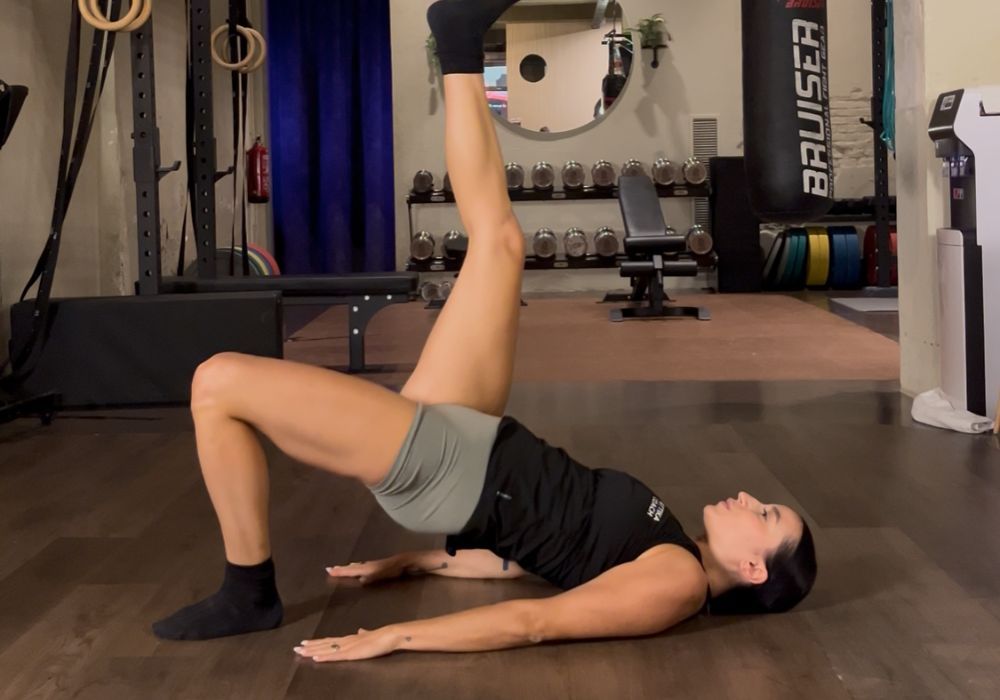
Running is a fantastic cardiovascular sport that you can do anytime, anywhere, no equipment and for free. But regretfully, many don’t realise that for running, your cardio ability is not the only thing you need. More than just muscles to protect against the impact of the pounding on the pavement on your joints - it’s about building the strength, stability and agility behind each stride. It’s making sure your joints are balanced and aligned so everything fits into place.
Every step in running is essentially a single-leg exercise, which means your balance, coordination, and unilateral strength matter more than you might think. By training the right muscles, you can run faster, reduce injury risk, and feel stronger with every run.
Here are six key exercises to add to your strength routine - and the science behind why they’ll transform your running.
1. Single-Leg Romanian Deadlift (RDL)

Running demands balance - and the single-leg RDL is the perfect way to train it. By hinging at the hip on one leg, you strengthen your hamstrings and glutes, which are the powerhouse muscles driving your stride. Strong hamstrings don’t just power you forward — they also act like brakes to control deceleration and protect against hamstring strains, one of the most common running injuries.
Tip: Focus on keeping your hips square and your back flat as you hinge forward. Think “I’m reaching back” rather than down.
2. Tibialis Raise
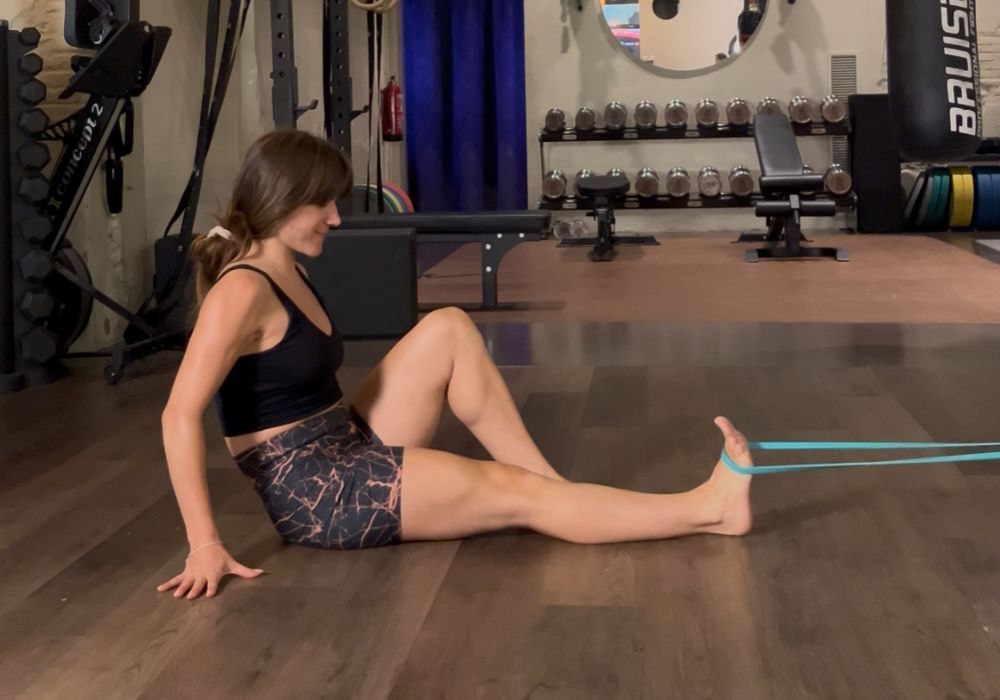
If you want bulletproof knees, don’t skip your tibialis anterior (the muscle running down the front of your shin). The tibialis raise strengthens this often-neglected muscle. A stronger tibialis reduces shin splints and knee pain by improving shock absorption at foot strike - making each landing smoother and safer.
Tip: If you don’t have a band to practice with then try leaning against a wall, feet slightly forward, then lifting your toes repeatedly while keeping heels grounded.
3. Single-Leg Glute Bridge
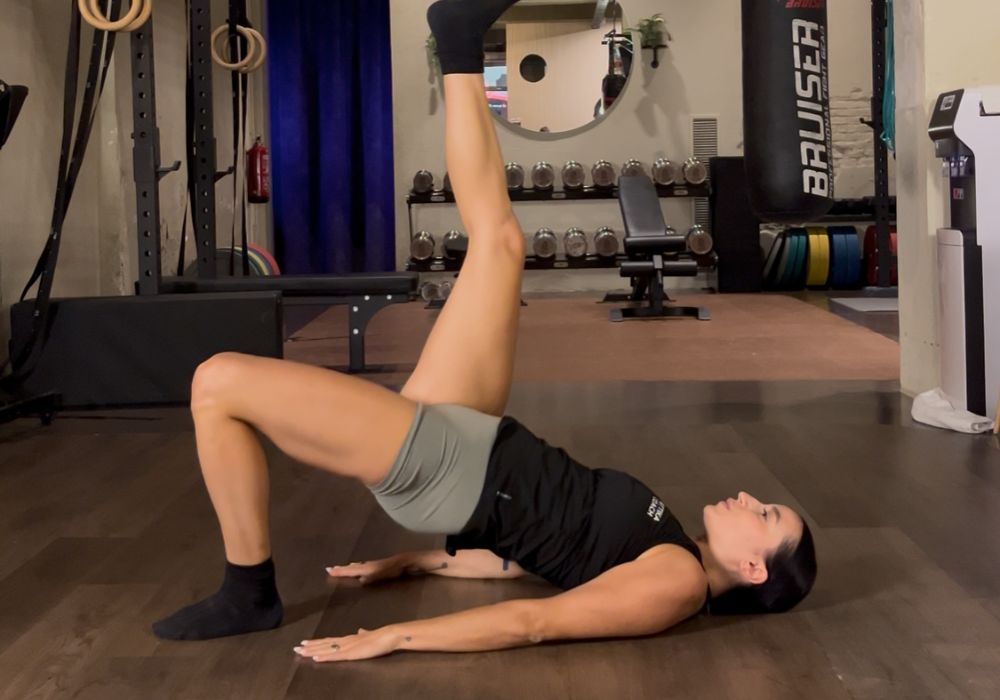
Running isn’t just about legs - it’s also about the core and hip flexors working together. The single-leg glute bridge fires up the glutes while forcing your core to stabilise your pelvis, improving both power and posture in your stride. Strong glutes mean more propulsion forward and less stress on the lower back and hamstrings.
Tip: Push through your heel and keep hips level — don’t let one side drop. Hold at the top for an extra glute burn.
4. Clamshells

Your abductors (the muscles on the outside of your hips) are small but mighty. Clamshells strengthen them, helping to keep your knees aligned and your pelvis stable. When the pelvis is stable, everything lines up — hips, knees, and toes. The better your alignment, the easier it is to generate force and reduce wasted energy.
Tip: Keep your feet together and pelvis tucked while you open your knees, try not to let your hips roll back. If you can’t feel it in your glute medius (the top corner of your glute, then you need to readjust)
5. Bulgarian Split Squat
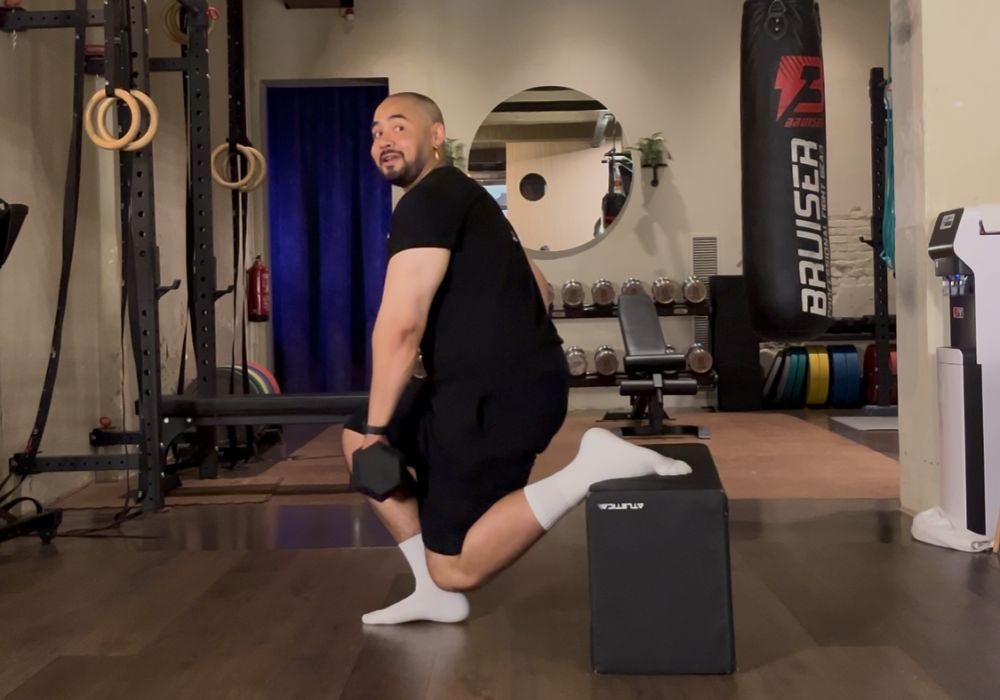
If there’s one must-do for runners, it’s this. Bulgarian split squats target quads and glutes while forcing you to balance on one leg - just like running. Unlike a regular squat, there’s nowhere for your stronger leg to hide. Training unilaterally builds symmetry. Equal strength on both sides reduces compensations that can lead to injuries and makes your running stride more efficient.
Tip: Start with your weaker leg. Do as many controlled reps as you can, then match that number on the stronger side.
6. Heel-Raised Knee-Over-Toe Lunge
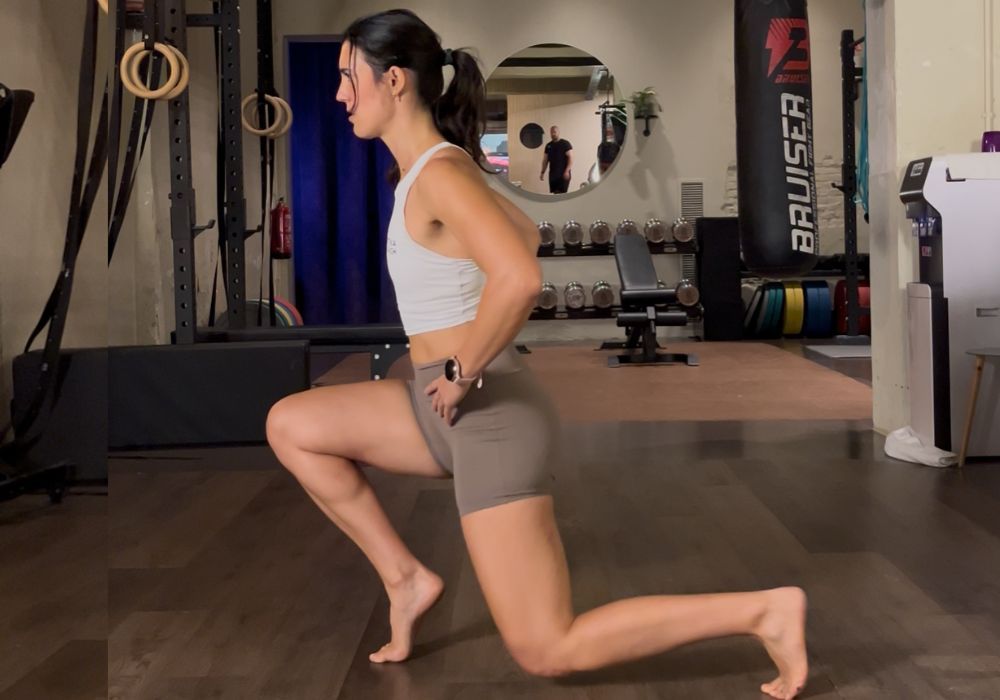
This variation of the lunge strengthens the vastus medialis oblique (VMO), the teardrop-shaped quad muscle that keeps your knee from collapsing inward. It also challenges calf strength, giving you more spring at toe-off and improving your overall balance in running.
Tip: Keep both heels lifted off the ground and focus on bringing your knee as far forward as you can, get all the way down before coming up.
So that covers it. You may have noticed that every exercise here is unilateral — one leg at a time. That’s because running is unilateral. Training each side individually ensures balance, prevents over-reliance on your stronger leg, and builds the kind of strength that directly translates into smoother, faster, injury-free running. So next time you hit the gym, don’t just run. Train the muscles that make you a better runner.
Running is a fantastic cardiovascular sport that you can do anytime, anywhere, no equipment and for free. But regretfully, many don’t realise that for running, your cardio ability is not the only thing you need. More than just muscles to protect against the impact of the pounding on the pavement on your joints - it’s about building the strength, stability and agility behind each stride. It’s making sure your joints are balanced and aligned so everything fits into place.
Every step in running is essentially a single-leg exercise, which means your balance, coordination, and unilateral strength matter more than you might think. By training the right muscles, you can run faster, reduce injury risk, and feel stronger with every run.
Here are six key exercises to add to your strength routine - and the science behind why they’ll transform your running.
1. Single-Leg Romanian Deadlift (RDL)

Running demands balance - and the single-leg RDL is the perfect way to train it. By hinging at the hip on one leg, you strengthen your hamstrings and glutes, which are the powerhouse muscles driving your stride. Strong hamstrings don’t just power you forward — they also act like brakes to control deceleration and protect against hamstring strains, one of the most common running injuries.
Tip: Focus on keeping your hips square and your back flat as you hinge forward. Think “I’m reaching back” rather than down.
2. Tibialis Raise

If you want bulletproof knees, don’t skip your tibialis anterior (the muscle running down the front of your shin). The tibialis raise strengthens this often-neglected muscle. A stronger tibialis reduces shin splints and knee pain by improving shock absorption at foot strike - making each landing smoother and safer.
Tip: If you don’t have a band to practice with then try leaning against a wall, feet slightly forward, then lifting your toes repeatedly while keeping heels grounded.
3. Single-Leg Glute Bridge

Running isn’t just about legs - it’s also about the core and hip flexors working together. The single-leg glute bridge fires up the glutes while forcing your core to stabilise your pelvis, improving both power and posture in your stride. Strong glutes mean more propulsion forward and less stress on the lower back and hamstrings.
Tip: Push through your heel and keep hips level — don’t let one side drop. Hold at the top for an extra glute burn.
4. Clamshells

Your abductors (the muscles on the outside of your hips) are small but mighty. Clamshells strengthen them, helping to keep your knees aligned and your pelvis stable. When the pelvis is stable, everything lines up — hips, knees, and toes. The better your alignment, the easier it is to generate force and reduce wasted energy.
Tip: Keep your feet together and pelvis tucked while you open your knees, try not to let your hips roll back. If you can’t feel it in your glute medius (the top corner of your glute, then you need to readjust)
5. Bulgarian Split Squat

If there’s one must-do for runners, it’s this. Bulgarian split squats target quads and glutes while forcing you to balance on one leg - just like running. Unlike a regular squat, there’s nowhere for your stronger leg to hide. Training unilaterally builds symmetry. Equal strength on both sides reduces compensations that can lead to injuries and makes your running stride more efficient.
Tip: Start with your weaker leg. Do as many controlled reps as you can, then match that number on the stronger side.
6. Heel-Raised Knee-Over-Toe Lunge

This variation of the lunge strengthens the vastus medialis oblique (VMO), the teardrop-shaped quad muscle that keeps your knee from collapsing inward. It also challenges calf strength, giving you more spring at toe-off and improving your overall balance in running.
Tip: Keep both heels lifted off the ground and focus on bringing your knee as far forward as you can, get all the way down before coming up.
So that covers it. You may have noticed that every exercise here is unilateral — one leg at a time. That’s because running is unilateral. Training each side individually ensures balance, prevents over-reliance on your stronger leg, and builds the kind of strength that directly translates into smoother, faster, injury-free running. So next time you hit the gym, don’t just run. Train the muscles that make you a better runner.
